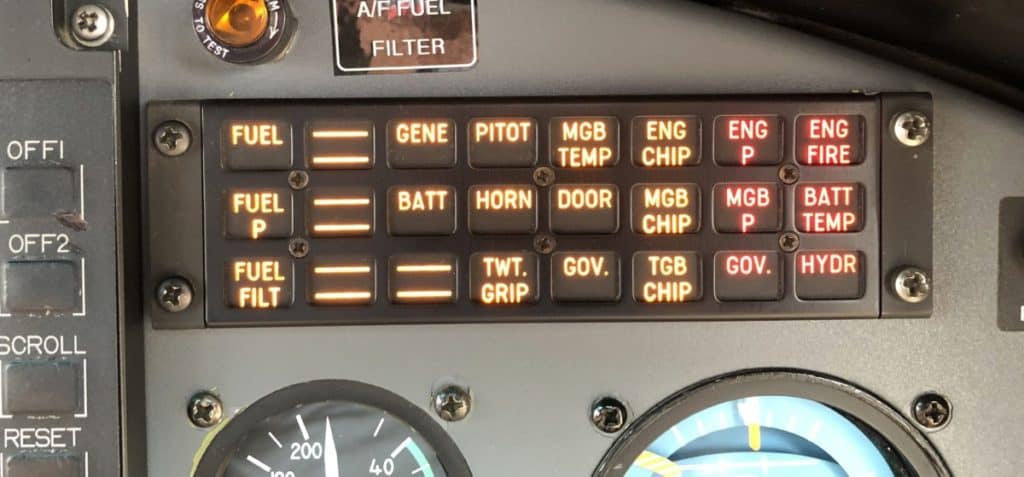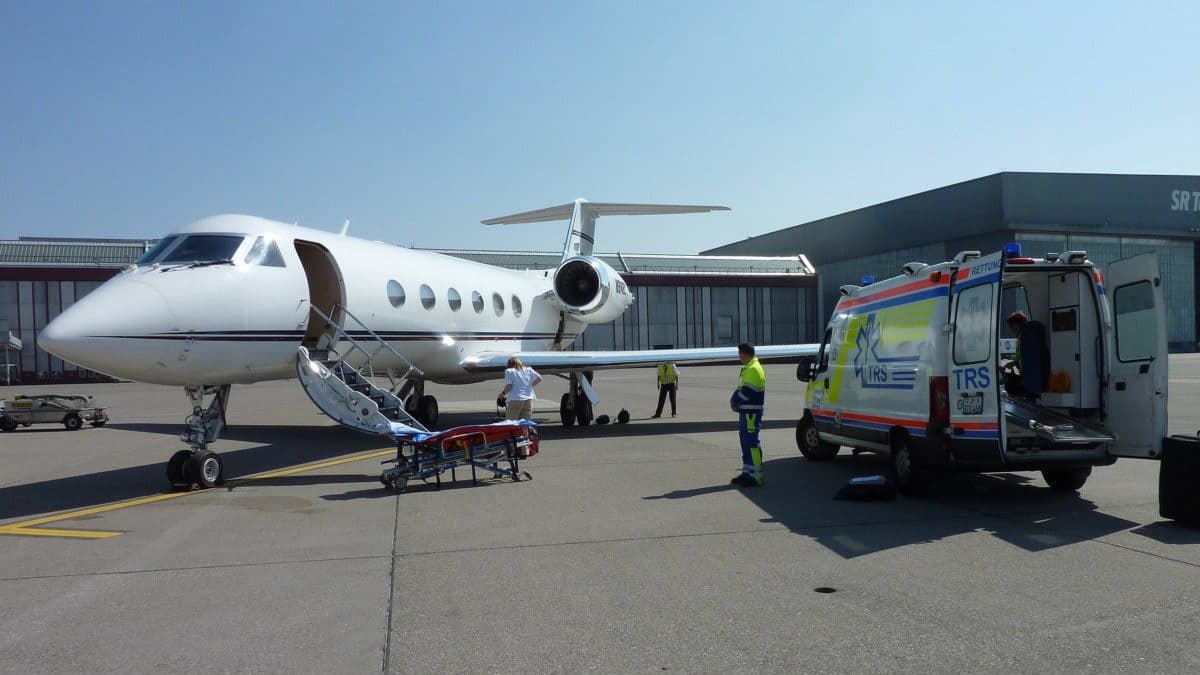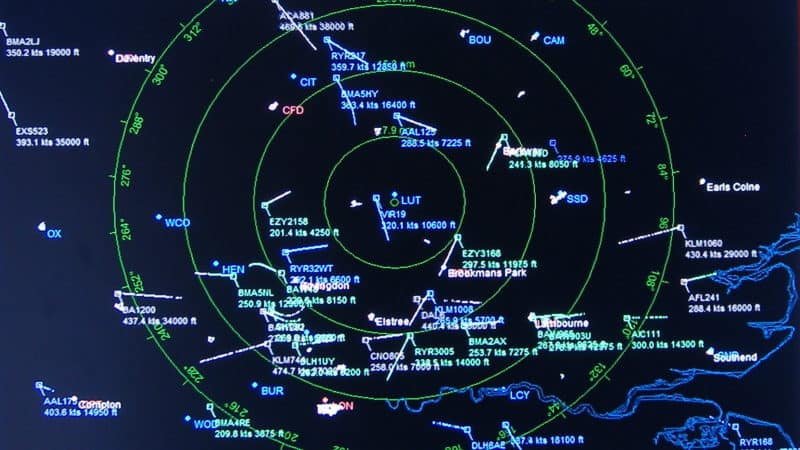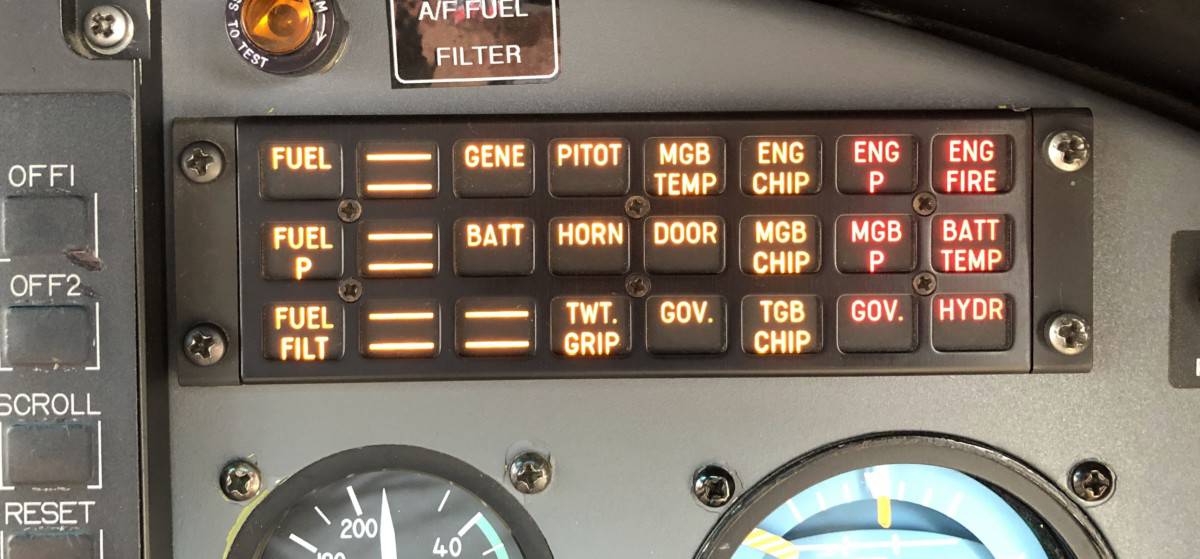
Most of us are aware of hearing a pilot call out a Mayday call while watching a movie or documentary, but you may have also heard them call a Pan-Pan. It is rare but it is also an official phrase used by pilots. The question is ‘What is a Pan-Pan Emergency call’?
The Pan-Pan call is an internationally recognized message given over radio to signal distress. It’s used by pilots and sailors and is broadcast to bring instant attention to an urgent need. There is no imminent danger like a Mayday call, but could develop into a Mayday if the situation becomes worse.
Most people outside of aviation usually get confused between the PAN-PAN call and the MAYDAY call. Both the phrases are used in case of an emergency, but the level and sometimes the time available decides which the pilot chooses to declare.
There are two states of emergency:
Urgency: The state of emergency which doesn’t pose an imminent danger or harm to the aircraft or its occupants but when ignored may cause catastrophe. In this case, a “Pan-Pan” call is used.
Distress: The state of emergency where the pilot is facing a life-threatening situation. In this case, a “Mayday” call is used.
In this article, we are going to focus on the Pan-Pan call but if you would like more information on the Mayday call please check out our other article here:
MAYDAY: Why Do Pilots Say Mayday?
Just like Mayday, the phrase Pan-Pan originated in France from “Panne”, a word in French that means breakdown, some kind of mechanical failure which when spelled in English came up as “PAN”, whose not-so-true acronym is “Possible assistance needed” or “Pay attention now”.
When Do Pilots Declare a Pan-Pan Emergency?
When a pilot feels they are in need of URGENT assistance they can declare a Pan-Pan call over the radio. Pilots are advised to use the current radio frequency if in contact with air traffic control, a popular frequency if in remote locations, or the international emergency frequency of 121.5Mhz.
The idea is to get in touch with someone else either in the air or on the ground who can provide assistance to the pilot, if required. In some cases just knowing there is someone else listening can help calm the pilot and allow them to figure out what needs to be done.
A pilot can declare a Pan-Pan emergency in the following cases, but not just limited to these:
- If the pilot feels that they are lost, and not able to orient themself in the air
- In case of a non-life threatening medical emergency on board
- Single-engine failure in the case of multi-engine aircraft
- Any system or structural failure which requires pilot attention and change in aircraft flight path and altitude but that failure doesn’t make the aircraft uncontrollable
- When the pilot sees some emergency situation on the ground, water, or air. For example A bad road accident, fire, ship or a boat in distress situation, an aircraft accident etc
- Fuel is starting to become low and further delay could become an issue
- or any other situation where the pilot feels they may need assistance.
At the time of the Pan-Pan call the pilot, occupants or aircraft are not in immediate danger but if the situation is not solved, becomes worse, or there is a time delay the need to move from an Urgency to Emergency may be required.
At that point, the pilot will then issue the Mayday call.
The most common example I have heard is when an airport gets temporarily shut down for weather and incoming airplanes are being stacked in holding patterns while the storm passes.
If a pilot is already low on fuel they may issue a Pan-Pan call to the air traffic controller who will then prioritize them out of the holding pattern for landing, or divert them to another airport.
If the air traffic controller is unable to do either of these and time becomes an issue that pilot may then issue a Mayday call which then dramatically changes how the aircraft is handled by air traffic control (ATC).

Join My Newsletter & Get Great Tips, Information and Experiences To Help You Become a Superb Pilot!
How Do Pilots Make a Pan-Pan Call?
As mentioned earlier, it is the phrase used for an “International” state of urgency, which signifies that the ICAO (International Civil Aviation Organization) has approved this phrase and is standardized for all the contracting states.
Along with its worldwide approval, there’s a specific way (flow/standard pattern) in which a Pan-Pan call should be made on the radio. Depending on the stress of the pilot any information is useful, but the more adherence to the format the better the help can be given.
A standard Pan-Pan radio call consists of the following information:
- “Pan-Pan, Pan-Pan, Pan-Pan”
- Who the Pilot is Calling (“Kansas Approach”)
- Aircraft Identification (“Jetsky 131”)
- Pilots Problem (“Having a medical emergency onboard”)
- Pilots Intention (“Would like to divert to Wichita airport”)
- Pilots Position (“Currently 35 Miles North East of Wichita”)
- Pilots Request (“Request approval for the intention stated and emergency medical services available on landing”)
- Passengers on Board (“17 souls onboard”)
- True Airspeed (“TAS of 185 knots”)
- Endurance (“1h30 minutes of fuel remaining”)
At this point, the FAA’s Aeronautical Information Manual 6-3-1(d) states that this call takes radio priority over any other radio call, other than a Mayday. The Pan-Pan warns all other pilots and air traffic controllers not to interfere with this call unless no response is heard from a receiving station. At which point anybody listening can provide assistance, if able.
This assistance may even be in the form of a pilot in another aircraft flying high overhead that can act as a messenger between the Pan-Pan pilot and an air traffic control unit if the pilot in urgency is too low to contact anyone and is unable to climb – Aircraft performance or cloud layer for example.
Once Kansas Approach receives this call they may assign the pilot in urgency to switch to a dedicated radio frequency to keep the approach frequency clear, or to contact Wichita directly. At the same time the air traffic controller or a second controller will instantly be on the phone to Wichita to prepare the necessary clearances for landing, any instructions for the pilot, and to ensure medical aid is waiting for the aircraft.

The air traffic controller will also be there to provide any dedicated help the pilot may require until they are either handed over to a Wichita air traffic controller or have landed and canceled the Pan-Pan.
The above-mentioned Pan-Pan call is a standard Pan-Pan call and because it is approved by ICAO any aircraft in international airspace will also get the same treatment it would get in its home country.
This standardization minimizes delays in getting the information out and help received.
Learn More…
Try These Articles:
* Aircraft & Pilot Call Signs: What Are They Really For?
* Do All Aircraft Explode When They Crash?
When Do Pilots Make a Pan-Pan Call?
Air traffic controllers always tell pilots to ask for help sooner rather than later. By declaring a Pan-Pan at the first signs of a problem occurring help can begin to be received. A second person or a clearer mind may be able to help the pilot deal with the situation much easier.
As a pilot myself here is how I would go about issuing a Pan-Pan call:
After realizing some kind of emergency situation exists in the aircraft, myself and any trained pilot would follow 3 steps:-
Aviate – To fly the airplane safely, this means ensuring the aircraft recovers into a safe and level flight regime. Turn on or off any systems required. Use the aircraft’s Emergency Procedures Checklist to ensure the aircraft is controllable
Navigate – To fly it safely in the right direction. Does that mean away from terrain or poor weather? Turn to head toward the nearest landing location whether that be a road or a clear, open area? The bigger the aircraft the bigger the runway or clear area is going to be needed!
Communicate – To inform the air traffic controller of the situation once the aircraft is in a safe flight regime and I’m not heading into danger. Now I can give all the required details and hope to get some assistance if required.
Pan-Pan vs Mayday – What’s The Difference?
Mayday is a distress call assigned to life-threatening or potentially life-threatening emergencies and demands radio silence from all other traffic. Pan-Pan is an urgent call without life-threatening emergencies but where help may be required. Pap-Pan calls take radio priority over all regular radio calls.
The two internationally recognized radio calls are designed to get instant attention and help for the pilot/s.
As mentioned, the Mayday call demands the highest level of radio silence when it is declared by a pilot. Only the station the pilot has called to can talk back to the pilot and everyone else is to remain silent. This ensures the pilot and air traffic controller do not get disturbed in the communications which can be absolutely critical to survival.
The air traffic controller will also assign all other traffic or the aircraft in distress to switch over to a separate frequency to keep the main radio frequency of the Mayday free. This may also occur to a Pan-Pan, especially if it was announced on a very busy airport radio frequency.
Here are a couple of examples:
1. An aircraft with one engine that is not functioning properly and if that engine fails it’s a Mayday as the pilot now has to do a forced landing.
2. In the case of multi-engine aircraft, when all the engine fails or when the aircraft is unable to fly to the nearest airport and the pilots have to do a forced landing, a Mayday is called.
3. A single-engine failure in multi-engined aircraft and when the aircraft can fly to an alternate or nearest airport and land safely, a Pan-Pan is called by the pilots.
4. A sudden depressurization in the cabin will be a Mayday call, but a very small leak in the cabin leading to slow depressurization is a Pan-Pan call.
No matter which call is declared the pilots can also use a device called a Transponder to help bring attention. The pilot can set a 4 digit code into the transponder and depending on the code inputted will grab the attention of the nearest radar controller. Those 4 digit codes are known as Squawk Codes.
During Normal Flight Operations:
An air traffic controller may assign a squawk code to every aircraft in flight within their sector. It is a kind of identity code of that aircraft (for that particular flight) and the ATC can see that aircraft’s position along with the squawk code written on their radar screen. This helps ATC see and differentiate all the aircraft in their airspace

The squark code digits are from 0 to 7 and once inputted by the pilot the air traffic controller ties the aircraft’s flight number or tail number to the squawk code for easy on-screen display.
For Example:
Aircraft Tail Number = 972JD
Assigned Squawk Code = 4232
The radar target will now show 972JD on the radar screen once the air traffic controller goes into the computer and ties 972JD and 4232 together.
During Emergency Flight Operations:
There are certain squawk codes allocated to various types of emergencies which can help to reduce the reaction time of air traffic control.
Apart from making a Pan-Pan or Mayday audio transmission, the pilot can also change the transponder squawk code to an emergency code which helps ATC to find that aircraft on the radar screen.
The emergency squawk codes are :
7500 – In case of a hijack
7600 – In case of radio communication failure
7700 – In any emergency situation
The 7500 – Hijack code is also a great way that pilots can discretely inform ATC that they have an issue without the hijackers hearing them make a radio transmission.
The second the pilot inputs one of these codes into their transponder it ‘Bings’ on the controllers’ radar screen and highlights the aircraft target for instant recognition – Super helpful in a very busy airspace with lots of targets on the screen.
Learn More…
Try These Articles:
* How Do Pilots Understand Air Traffic Control (ATC)?
* Birds: How Do Pilots Avoid Them?


